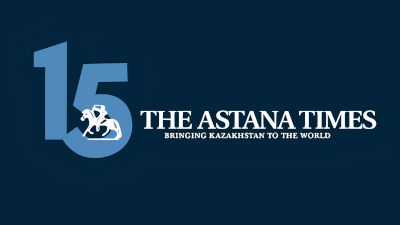“The National Bank of Kazakhstan and the government of Kazakhstan have developed an action plan to reduce the dollarisation of the economy for 2015-2016. The plan includes three main strategic directions,” a National Bank of Kazakhstan report reads. According to the financial regulator, under the first direction, it is necessary to ensure macroeconomic stability; under the second direction, attention will be paid to developing non-cash payments and reducing the shadow economy and under the third, the national currency will assume supremacy over foreign currencies. The plan was approved at a Feb. 17 meeting of the government and a Feb. 25 meeting of the National Bank of Kazakhstan.
According to theNational Bank of Kazakhstan,as part of the third directionof the de-dollarisation plan for 2015-2016, guarantees on deposits in Kazakhstan tenges will be increased from 5 to 10 million tenge (US$26,492-US$53,885). In addition, interest rates on deposits in foreign currencies will be reduced to 3 percent per annum. A ban on pricing in foreign currencies, including in conventional units will also take effect. The first direction of the plan includes measures to diversify the economy and increase the amount of locally produced goods and services available. The second direction initiates reforms on non-cash payments. In particular, due to changes in the tax code, in January of this year, VAT (value added tax) expenses will be reimbursed by budget processing enterprises.
“In 2014, the total consolidated profit of Samruk Energo totalled 15.5 billion tenge (US$83.5 million), which is 75 percent higher than intended targets,” Chairman of the Board of SamrukEnergo Almasadam Satkaliyev said at a Feb. 27 Central Communication Services (CCS) briefing. According to the head of the company, at the end of 2014, the group of companies had produced 28.2 billion kilowatt hours of electricity. Satkaliyev stated that the Bogatyr Company had produced 38 million tonnes of coal last year, which is about 35 percent of the country’s total coal production.
According to the Ministry of Finance of Kazakhstan, 232 facilities, including 18 national properties will be privatised this year. “In 2015, it is planned to put 232 facilities into operation, including 18 that are national property, 121 that are municipal property and 43 from holdings,” a Ministry of Finance statement read. A total of 7,043 facilities worth 42.5 billion tenge (US$228.98 million) have been legalised in an ongoing campaign to legalise property over a period of 12 months. Local authorities received 15,465 requests totalling 119.3 billion tenge (US$642.76 million). Finance Minister Bakhyt Sultanov noted the important role of the Ministry of Finance in improving the business climate in Kazakhstan. “More work is needed to create a favourable business environment and e-government services,” Sultanov said. To ensure business development, privatisation efforts will be accelerated.
According to NADLoC, the National Agency for the Development of Local Content, Kazakhstan has about 100 systematic measures of state support for domestic producers. In order to better coordinate activities and apply state support, the government further adopted an action plan to support industrial enterprises for 2015. The move covers over 70 tasks. In line with presidential orders, a campaign titled Kazakstanda Zhasalgan, meaning Produced in Kazakhstan, was launched. Earlier, the NADLoC held a logo design completion for a logo to mark all domestically produced goods


